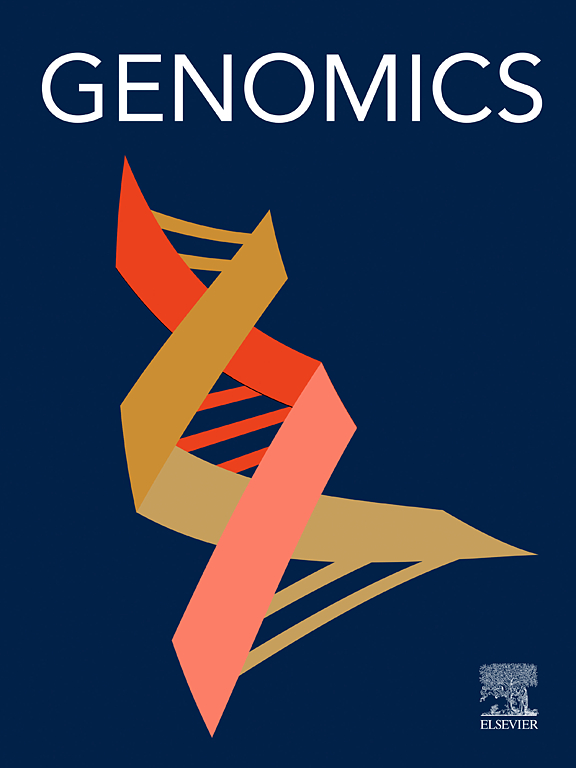A chromosome-level genome assembly of Termitomyces fuliginosus using Oxford Nanopore and Hi-C sequencing
IF 3
2区 生物学
Q2 BIOTECHNOLOGY & APPLIED MICROBIOLOGY
引用次数: 0
Abstract
Termitomyces fuliginosus is a tasty edible mushroom with both nutritional and medicinal values, consumed by native people throughout Asia. However, studies about this mushroom are limited due to lack of fine genomic information, such as the molecular mechanisms underlying development, symbiosis with termites, and plant biomass degradation. In this study, we reported a chromosome-level reference genome of T. fuliginosus assembled using Oxford Nanopore technologies (ONT) and Hi-C technologies. In total, the clean data obtained from ONT and Hi-C sequencing amounted to 10.42 Gb and 21.75 Gb, respectively. The assembled genome consisted of 13 chromosomes with a total length of 65.66 Mb. Completeness evaluations showed that this assembled genome had high quality, with a complete BUSCO score of 91.6 %. In total, 10,319 protein-coding genes were identified, and each gene received at least one functional annotation hit across the queried databases. Based on single-copy orthologous genes, phylogenetic analysis revealed that T. fuliginosus shared a close evolutionary relationship with Termitomyces cryptogamus, Arthromyces matolae, Tricholoma furcatifolium, Tephrocybe rancida, Lyophyllum atratum, and Tricholoma matsutake. A total of 303 carbohydrate-active enzymes (CAZyme) genes were identified in the T. fuliginosus genome, enabling a better understanding of the carbohydrate degradation capabilities for T. fuliginosus. This chromosome-level genome of T. fuliginosus provides valuable reference data for utilizing the medicinal and nutritional value of this mushroom, such as accurate genomic sequences without gaps, genomic analysis of functional genes, and visualization of chromosomal structural variations.
利用牛津纳米孔和Hi-C测序技术对白蚁进行染色体水平的基因组组装。
白蚁菌(Termitomyces fuliginosus)是一种兼具营养和药用价值的美味食用菌,被亚洲各地的土著人食用。然而,由于缺乏精细的基因组信息,如发育的分子机制,与白蚁的共生关系以及植物生物量降解,对这种蘑菇的研究受到限制。在这项研究中,我们报道了利用牛津纳米孔技术(ONT)和Hi-C技术组装的T. fuliginosus染色体水平参考基因组。ONT和Hi-C测序共获得10.42 Gb和21.75 Gb的干净数据。组装后的基因组由13条染色体组成,全长65.66 Mb。完整性评价表明,该基因组具有较高的质量,BUSCO评分为91.6 %。总共鉴定了10,319个蛋白质编码基因,每个基因在查询的数据库中至少获得了一个功能注释。基于单拷贝同源基因的系统发育分析表明,该菌与隐白蚁、番茄节菌、分叉口口蘑、斑痣口口蘑、白斑口口蘑和松茸口蘑具有密切的进化关系。在T. fuliginosus基因组中共鉴定出303个碳水化合物活性酶(CAZyme)基因,从而更好地了解T. fuliginosus的碳水化合物降解能力。该染色体水平基因组为利用该菌的药用和营养价值提供了有价值的参考数据,如精确的无间隙基因组序列、功能基因的基因组分析和染色体结构变异的可视化。
本文章由计算机程序翻译,如有差异,请以英文原文为准。
求助全文
约1分钟内获得全文
求助全文
来源期刊

Genomics
生物-生物工程与应用微生物
CiteScore
9.60
自引率
2.30%
发文量
260
审稿时长
60 days
期刊介绍:
Genomics is a forum for describing the development of genome-scale technologies and their application to all areas of biological investigation.
As a journal that has evolved with the field that carries its name, Genomics focuses on the development and application of cutting-edge methods, addressing fundamental questions with potential interest to a wide audience. Our aim is to publish the highest quality research and to provide authors with rapid, fair and accurate review and publication of manuscripts falling within our scope.
 求助内容:
求助内容: 应助结果提醒方式:
应助结果提醒方式:


